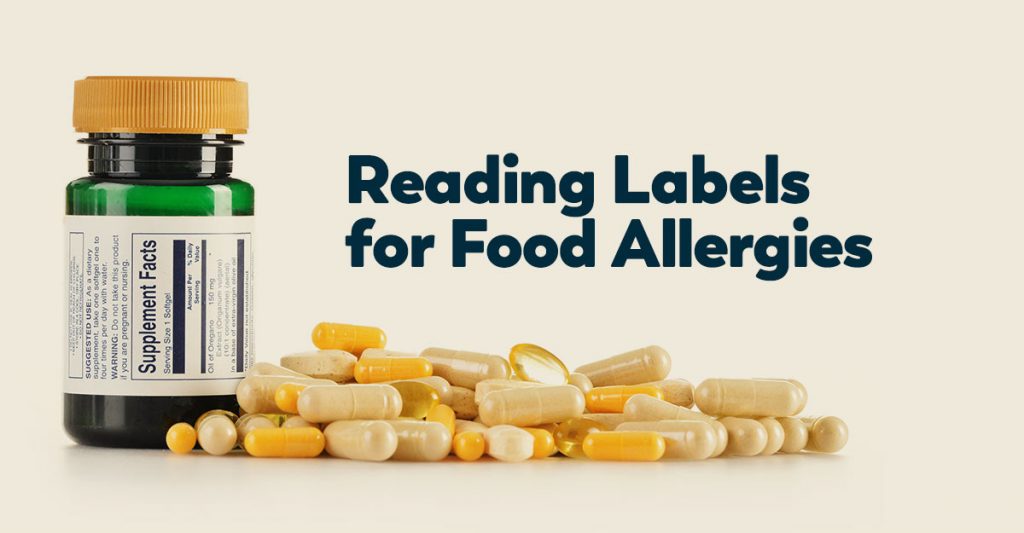
May is Food Allergy Awareness Month, a time to focus on understanding food allergies and what it’s like to live with them. A food allergy is different from a food intolerance and can be life threatening. One key skill allergy sufferers must learn is how to read food and supplement labels in order to avoid allergens and dangerous reactions.
The 8 most common food allergies are cow’s milk, eggs, tree nuts, peanuts, shellfish, wheat, soy, and fish. These account for 90% of all food allergy reactions. Keep reading to learn more about how to understand food labels and spot sneaky ingredients before they cause a problem.
What is a Food Allergy?
Food allergies are an immune reaction which affects roughly 5% of adults and 8% of children. These numbers are increasing in the developed world, and scientists hypothesize that pollution, dietary changes, and less exposure to microbes could be the cause. Food allergies can be life-threatening, and an allergic reaction to a trigger food may include difficulty breathing, swelling, hives, vomiting, rashes, diarrhea, and more.
Understanding Food Labelling
Living with a food allergy means knowing how to read processed and packaged foods to scan for offending allergens. All ingredients used to make a product must be listed, but sometimes these lists are long and difficult to break down.
Want to become a pro at reading labels and avoiding allergens? We have some tips you can add to your toolbox to prepare for your next grocery run.
Scan for Allergen Statements
Certain laws such as the Food Allergen Labeling and Consumer Protection Act of 2004 (FALCPA) have made this easier. FALCPA changed packaging guidelines so that the 8 most common allergens are specifically labelled as “contains milk, wheat, egg, etc.”
Learn Less Common Names
Cow’s milk, for example, doesn’t always appear on a food label as “milk.” It could appear as ghee, custard, lactose, butter, whey, and a host of other names. It’s important to understand the other names your allergen goes by to avoid reactions.
Check Every Time
Companies can, and sometimes do, change the ingredients that make up a certain product and they don’t have to indicate this on the label. Just because a packaged food item has been safe in the past, doesn’t not guarantee it will be safe to consume forever. It’s best to check labels for your known allergen every time to ensure a product is safe.
Supplements to Support Food Allergies
Certain supplements may be able to help some allergy sufferers lower intolerance, here are a few we recommend:
AllerGzyme by Designs for Health
Want to eat the foods you love without reaction? AllerGzyme by Designs for Health is an enzyme supplement which helps the body digest protein. Each capsule can help the body digest and break down proteins such as gluten, gliadin and casein from whey and dairy.
Full Spectrum Digest by Allergy Research Group
Full Spectrum Digest from Allergy Research Group contains a unique enzyme blend, which includes glutalytic, designed to help gluten protein degradation. This product may help people who suffer with digestive discomfort from gluten as well as promote the digestion of other proteins, fats, and carbs.
What are your best tips for reading food and supplement labels? Tell us how you manage your food allergies in the comments section below.
